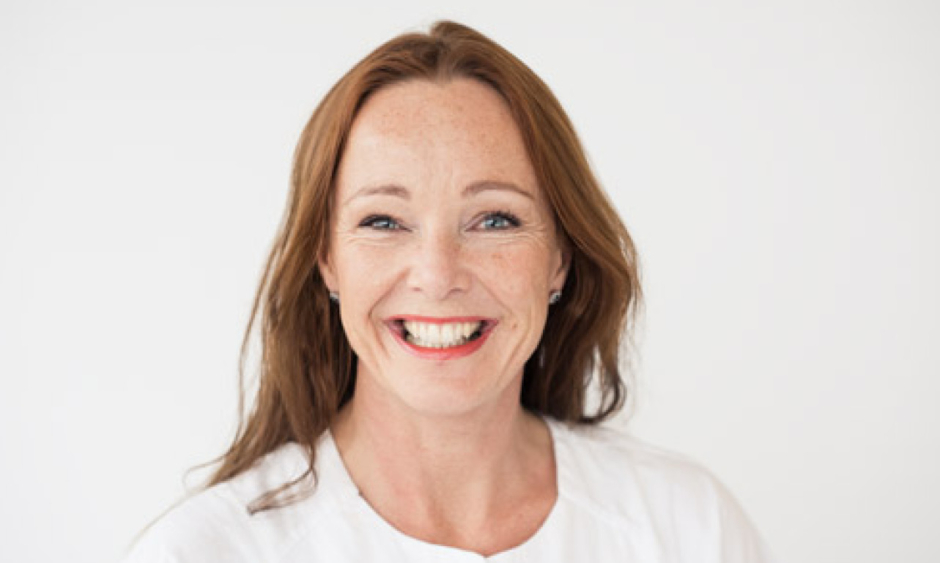Dr Rikke Helene Moe | Chair of European League Against Rheumatism (EULAR) Standing Committee of Health Professionals in Rheumatology
National Advisory Unit on Rehabilitation in Rheumatology, Division of Rheumatology and Research, Diakonhjemmet Hospital, Oslo, Norway
![]()
What life decision or educational experience inspired your career choice and what do you believe are the key qualities for a successful career in rheumatology?
It was evident from the start; I knew I had to work in this field already when I was a student. The people with rheumatic diseases whom I met taught me so many things they did not know about their diseases; not just from a biomedical point of view, but about complex biopsychosocial challenges such as how best to live with their disease. Trying to help them find these answers made me aware of several unexplored areas. Rheumatology is an extremely interesting, complex, and challenging field.
For many years now I have been very fortunate to be a part of an internationally respected, multidisciplinary research group within rheumatology, and with >20 years as a physical therapist and researcher I’ve learnt even more about the things we do not know. Engaging with the European League Against Rheumatism (EULAR) changed my way of thinking; it gave access to several networks, recommendations, educational programmes, communications, and resources that continuously opens up new possibilities of collaboration to help fill these gaps.
I believe the combination of experience, curiosity, patient partnership, engagement in national and international networks, and having a very proficient and assertive workplace are keys to a successful career in rheumatology.
What rheumatic disease do you believe merits wider attention?
In the beginning of my career, there was obviously little/no attention to the challenges of the many people with osteoarthritis. Patients kept telling us that their osteoarthritic (OA) hands were often overlooked. For the last couple of years, pharmacological and nonpharmacological treatments for osteoarthritis in general, including hand OA, have taken giant leaps forward. There is still a long way to go, but many strong research groups are focussing on taking this field further now.
Currently, it has become more and more obvious that we need more evidence on how best to treat and advise people with connective tissue diseases. Together we can help develop this field through science and education. EULAR is currently trying to facilitate initiatives and support the research groups who are currently working on this through Study Groups and Task Forces.
Your recent publication, ‘Exercise and Inflammation,’ discusses the possibility of exercise exerting anti-inflammatory effects. Could you please elaborate on these findings?
Historically, rest was wrongly recommended to people with rheumatic and musculoskeletal diseases (RMD), due to a fear that exercise could negatively impact disease activity. Exercise is currently one of the recommended non-pharmacological corner stones in the treatment of most rheumatic diseases. The publication referred to is a result of several collaborations within a network of clinicians and researchers who have been working to develop this field for many years. We have had an emphasis on the role of physical activity and exercise therapy in the management, prevention, and treatment of rheumatic diseases. This network has manifested as a EULAR Physical Activity and Exercise Therapy Study Group. In short, exercise is a powerful treatment for RMD.
As novel approaches to treatments emerge, the possibility of individualised medicine grows. What are your thoughts on individualising exercise therapies for the treatment of rheumatic diseases?
Everyone understands that medication must be individually tailored in order to be efficient, and
the same applies to exercise. The effects of exercise for people with rheumatic diseases capture far more than general health aspects; it can help control disease and symptoms, as well as reduce the risk of comorbidity. Individually tailored exercise at the right level can improve function and physical fitness, reduce pain, depression and fatigue, help control disease and protect against comorbidity, and at the correct dosage even positively impact inflammation.
What are the main responsibilities of the EULAR Standing Committee of Health Professionals in Rheumatology (HPR), of which you are the Chair?
We are currently shaping future health care which increases the need for optimised evidence-based care, innovation, and seamless collaboration. The HPR Scientific and Educational Committees are highly motivated committees of health professionals within rheumatology (clinicians and researchers) who assist in developing, following-up on, and managing novel ideas.
Health professionals in rheumatology all over Europe have different strengths, and together we make an exceptionally skilled and strong group. We are lucky to take part in a wonderful fellowship and have colleagues to trust, cooperate with, and learn from.
Future HPR research projects are mainly aimed at: maintaining and improving individuals everyday life and participation in functional activities and society; enhancing individuals’ ability to self-manage rheumatic musculoskeletal diseases; supporting individuals to stay in or return to work and education; and reducing inequality and inequity in healthcare for people with RMD.
Educational HPR projects primarily focus on: identification of HPR educational needs; a comprehensive and evidence-based core curriculum which articulates with the wider EULAR strategy and maps on to the varying needs of HPR in EULAR; a tiered competency framework to allow assessment and, as appropriate, certification against agreed standards; a creative plan for maximising access to and uptake of the resources provided by EULAR; a formal implementation plan for the strategy and associated materials; and an evaluation of the uptake and impact of the strategy.
During your term as Chair, what are the biggest accomplishments you wish to achieve, and how do you plan to contribute to the committee’s goal of building an international network of excellence?
EULAR HPR conducts research that substantially impacts and significantly contributes to the knowledge and evidence base of the quality of life for people with rheumatic musculoskeletal diseases. Accessibility, equality, organisation of health care services, outcomes, and policy improvements relevant to people with rheumatic and musculoskeletal diseases, represent important areas of research.
We have developed our EULAR HPR research strategy 2018–23, with actions towards improving and sustaining quality of life for people with rheumatic musculoskeletal diseases. The current macroeconomic and geostatic mega trends point towards a shift in demography and a rise in technology that will be shaping the health care system of the future. This increases patient needs and underlines the importance of optimised evidence based care, innovation, and seamless collaboration between the health care system and other stakeholders, which has become highly visible with the current pandemic.
We in the HPR leadership, together with the committees, are trying to facilitate collaboration, networking, research, educational activities, an excellent EULAR Congress programme, Study Group activities, communication, and implementation, and to expand our project portfolio and recommendations in line with our strategy.
How did EULAR’s decision to opt for a virtual congress this year impact your committee?
We were prepared for the possibility of a smaller e-congress a couple of months ahead, and appreciate taking part in this challenge. We made our priorities and contributed to a selected EULAR programme for the e-congress menu in a short amount of time, well aware that this will impact on the way we think about our congresses and sustainability in the future. I am sorry that we will not be able to physically meet at the congress in Frankfurt, but we are excited about testing this new format.
A recent publication of yours, ‘Clinical Aspects of Hand Osteoarthritis,’ highlights that osteoarthritis is predicted to become one of the leading causes of disability. Could you provide key takeaway messages from this book and any advice you might have for our readers?
The key messages are that it is important that people with hand osteoarthritis are offered education about their disease and how to self-manage, and that exercise and orthoses can help improve symptoms and function.








